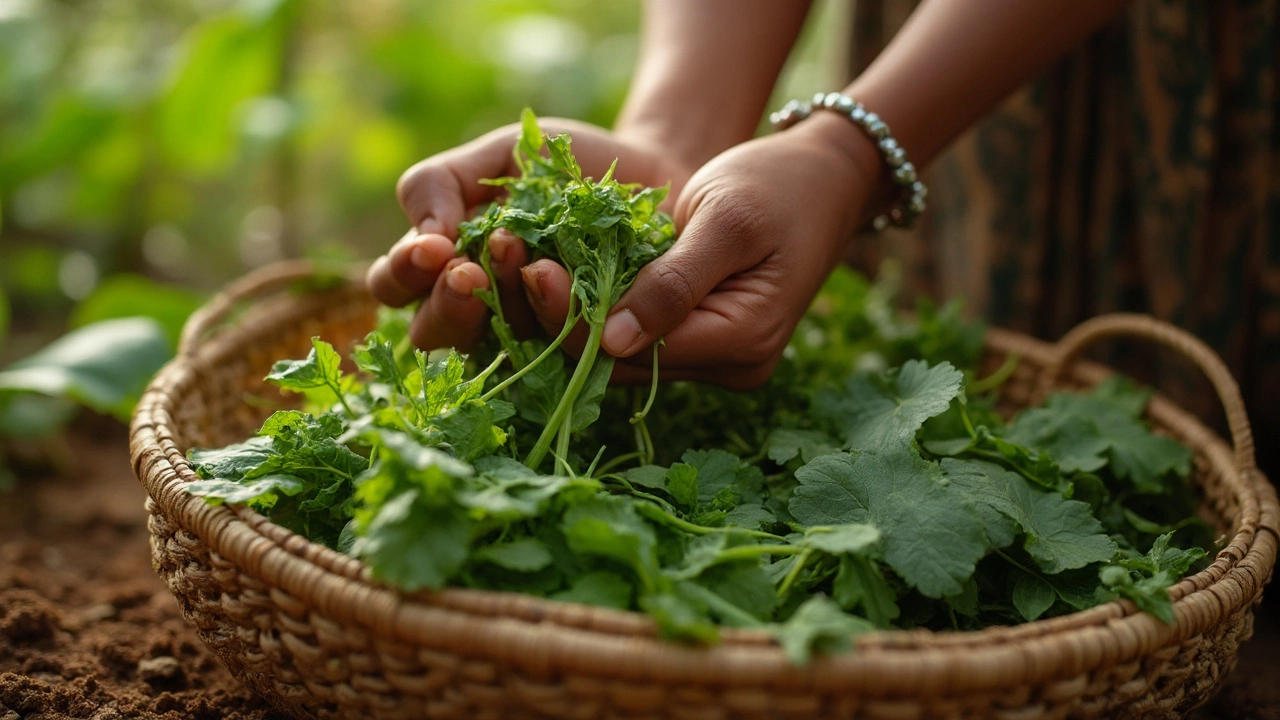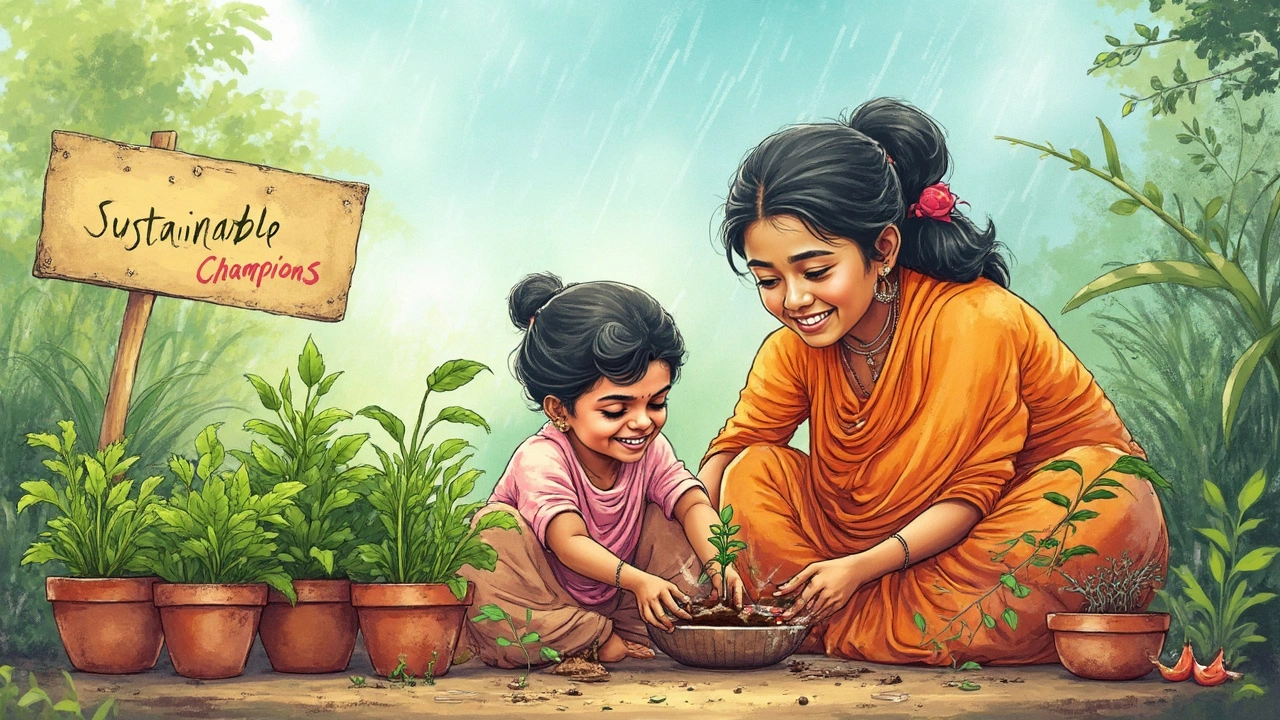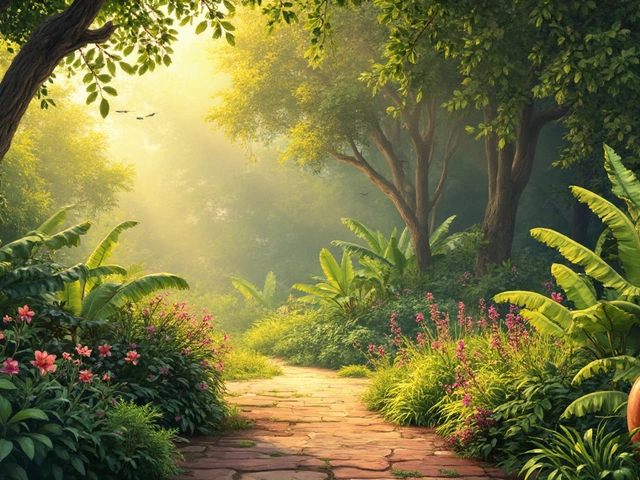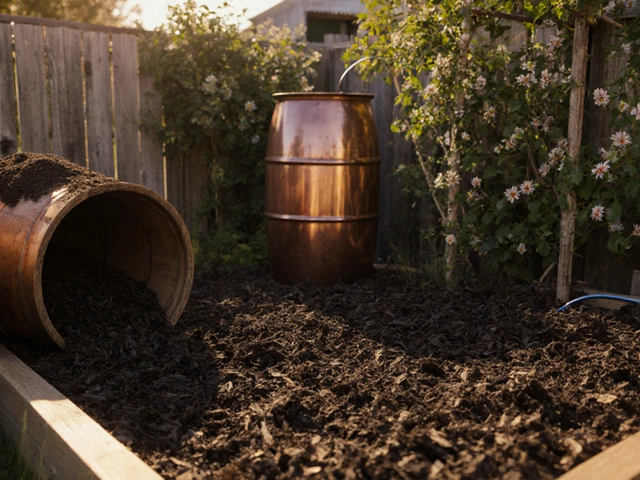Sustainability isn’t just a buzzword when it comes to growing your own food. Choosing veggies that are gentle on the earth can save you time, money, and a whole lot of water. But not all plants are created equal—some are thirsty divas, others demand loads of fertilizer, and a few just fizzle in poor soil. So, which vegetable gives you the most bang for your eco-buck?
If you’re imagining something exotic, think again. The top pick sits quietly in backyard gardens and pantry shelves everywhere. Hint: it fixes its own nitrogen, shrugs off drought, and fills your plate with protein. Ready to find out why this humble plant outshines the rest for growers who care about the planet?
- What Makes a Vegetable Sustainable?
- Why Beans Win the Sustainability Game
- How to Grow Beans with Less Fuss
- Smart Ways to Use the Whole Plant
- Other Strong Contenders and Final Tips
What Makes a Vegetable Sustainable?
The idea of a sustainable vegetable is actually pretty straightforward. We’re talking about plants that need less water, fewer chemicals, bounce back after tough weather, and don’t mess up the soil. All of these things make your garden greener and your harvests more reliable.
Let’s break down what really counts when sizing up the sustainable gardening champions:
- Low Water Use: Plants that don’t guzzle water lighten the load on local supplies. In lots of areas, drought is getting more common, so water-wise veggies are a big win.
- No Need for Synthetic Fertilizers: Some vegetables, like beans, have a cool trick—they pull nitrogen straight from the air and put it into the soil. This saves you from buying fertilizer and keeps waterways cleaner.
- Pest and Disease Resistance: If a plant shrugs off bugs and mildew on its own, you don’t need to spray chemicals or fuss with soil treatments.
- Big Yield per Square Foot: The more you get from a tiny patch of soil, the less ground you have to dig up or water. Think foods that give lots of food from just a few plants.
- Doesn’t Trash the Soil: The best crops actually help soil stay healthy, or at least don’t wreck it. Deep roots, for example, keep dirt from washing away, and some plants even boost soil nutrients for the next season.
The table below lays out just how much common vegetables differ on these points:
| Vegetable | Water Needs (Gal./Pound) | Fertilizer Needed | Pests/Disease Risk | Soil Impact |
|---|---|---|---|---|
| Beans | 17 | Low | Low | Improves |
| Lettuce | 23 | Medium | High | Neutral |
| Tomatoes | 41 | High | Medium | Neutral |
| Broccoli | 34 | Medium | Medium | Neutral |
If you want your garden to work with nature (instead of against it), these are the factors you want to check before planting anything new. Sustainability is all about less waste, less hassle, and more reliable harvests.
Why Beans Win the Sustainability Game
Beans are powerhouses when it comes to sustainable gardening. First off, they don't suck up loads of water like lettuce or tomatoes do. Most common beans—think green beans, black beans, and kidney beans—do just fine with less irrigation, especially after they get going. This means you can grow them even during hot spells or in places where water isn't always easy to find.
Another huge plus: beans make their own fertilizer. Thanks to their special partnership with soil bacteria, beans pull nitrogen straight out of the air and tuck it into the soil. You don't have to add chemical fertilizers, which saves you money and keeps harmful runoff out of streams and waterways. Plus, whatever nitrogen the beans don't use helps the next crop you plant, making your soil better every year.
Let’s talk numbers. Studies show that dry beans need about half the water per pound compared to rice or wheat. They’re high in protein and fiber, so a little goes a long way. Here’s a quick snapshot:
| Crop | Water Usage (Liters/kg) | Protein per 100g (g) |
|---|---|---|
| Common Beans | 2,100 | 21 |
| Wheat | 1,827 | 13 |
| Rice | 2,500 | 2.7 |
| Lettuce | 238 | 1.4 |
Beans really pull their weight compared to grains or leafy greens. You also don’t need loads of fancy equipment or chemicals. Most types grow well in basic soil and just need some sun and maybe a simple trellis. Less fuss, less waste.
On top of all that, beans boost biodiversity. They attract pollinators and help break up pest cycles when you rotate them with other crops in your garden. Growing beans is a win for you and a bigger win for the planet—what’s not to like?

How to Grow Beans with Less Fuss
Beans are famous for being totally low-maintenance. Seriously, if you want a veggie that almost grows itself, beans have your back. Here’s what you really need to know to get them going with hardly any drama.
- Sustainable gardening starts with picking the right spot. Beans love sunshine—make sure your patch gets at least six hours of direct light a day.
- Don’t stress your soil. Beans are nitrogen fixers, so they boost soil fertility as they grow. That means you can skip the expensive fertilizers—just regular garden soil works just fine.
- Planting couldn’t be simpler. Push dry beans an inch into the soil, about 3 inches apart for bush beans, or give climbing varieties a little more leg room and something to climb, like a pole or trellis.
- Water only when the soil is dry an inch below the surface. Unlike tomatoes or lettuce, beans handle a bit of drought, so don’t drown them.
- Skip the mulch if your area already stays moist; otherwise, a thin layer keeps weeds down and saves you from pulling them later.
If you want a faster harvest, try bush beans. These guys are speedy—some give you snap-ready pods in just 50 days. Pole beans take longer but crank out more food over the season. And here’s a pro tip: don’t crowd your beans. Good air flow means fewer leaf diseases, especially in humid summers.
Beans rarely attract pests, but if you spot beetles or aphids, knocking them off with a splash of soapy water works better than any chemical option. And you don’t need fancy equipment—just a patch of ground, seeds, and a good attitude. You’ll be shelling or snapping in no time, using less water and effort than almost any other crop around.
Smart Ways to Use the Whole Plant
Beans aren’t just about pods and seeds—the whole plant is surprisingly useful if you know what you’re doing. That’s what makes them a star when talking about sustainable gardening. Let’s break down how nothing has to go to waste.
First up, young bean leaves. You can pick these while still tender and toss them into salads or stir-fries. In several African and Asian countries, bean leaves are a staple green, loaded with vitamins and minerals. Just wash them well and use them like you would chard or spinach.
Next, those pods you’ve let get a bit too big or stringy? Don’t toss them—compost! But if they’re not too tough, simmering them with a bit of broth can pull out what’s left of the flavor for a homemade veggie stock.
Roots usually get ignored, but with beans, you have a hidden benefit. Beans pump nitrogen into your soil with their root nodules. After harvest, instead of pulling up the whole plant, snip the stem at soil level. The roots stay underground, slowly decomposing, and feed your next round of plants—less waste, healthier soil.
According to the Soil Science Society of America,
"Bean plants return more nitrogen to the soil than most other crops, reducing the need for added fertilizers in gardens."
- Eat the young leaves: Pick tender ones, wash, and cook or eat raw.
- Use overripe pods for broth: Boil stringy pods to flavor soups and stocks.
- Leave roots for the soil: Cut stems, let roots break down, and help your soil get richer.
- Compost everything else: Stems and pods that are too tough go straight to the compost heap for zero waste.
So, with beans, you can eat, enrich the soil, and keep your compost healthy—all without much extra effort. That’s a win for your garden and the planet.

Other Strong Contenders and Final Tips
Beans may be the rockstars of sustainable gardening, but they aren’t the only options that deserve some love. Lots of familiar veggies score high marks for being easy on the planet. Let’s break down a few top picks and what makes them stand out in the sustainability crowd.
- Kale and Collard Greens: These leafy greens shrug off pests and diseases without lots of sprays. They grow almost year-round in mild climates and don’t need much water once established.
- Carrots: Carrots dig deep, loosening soil naturally and leaving behind organic matter when their tops are chopped off. Plus, their water needs are modest compared to crops like cabbage and lettuce.
- Zucchini: Start with one plant—seriously, most families can’t keep up with the harvest. Zucchini produces lots of food quickly on little space and doesn’t mind poor soil.
- Radishes: Ready in just about a month, radishes make a smart choice for gardeners looking to save water and use space efficiently. Their fast growth means less time for pests and disease to take hold.
- Potatoes: Not only do potatoes provide lots of calories, but you can get a bumper crop in small, contained areas like grow bags or barrels. They break up hard soils, too.
Need some numbers to back up your choices? Check out how some common vegetables stack up in their resource needs and yields:
| Vegetable | Water Needed (gallons/lb yield) | Harvest Time (days) | Notes |
|---|---|---|---|
| Beans | 33 | 60-80 | Add nitrogen to soil |
| Kale | 23 | 55-75 | Multiple harvests per plant |
| Carrots | 27 | 70-80 | Low fertilizer needs |
| Zucchini | 26 | 45-55 | High yield per plant |
| Potatoes | 34 | 80-110 | Great in containers |
Ready to up your sustainable gardening game? Here’s what helps:
- Start with what grows easily in your region. Local seed swaps can be goldmines for tried-and-true varieties.
- Use mulch to lock in moisture and cut down on weeds and watering.
- Mimic nature—interplant different crops to use space well and keep pests confused.
- Don’t get hung up on perfect-looking produce. Slightly odd shapes or a little bug nibble are perfectly edible.
- Compost all your veggie scraps and plant trimmings to build healthier soil for free.
Gardening sustainably isn’t about doing everything “by the book.” Use what you already have, stay curious, and pay attention to what works in your backyard. Sometimes, a small change—like picking a thirsty crop less often—can save water and effort for years to come.




